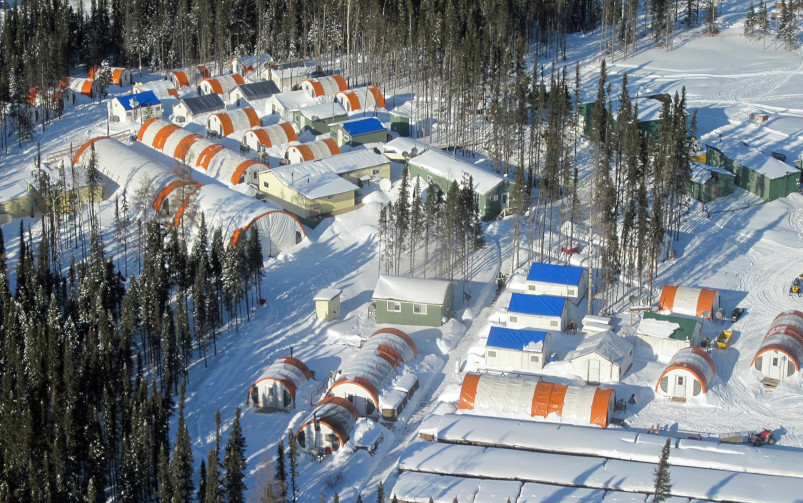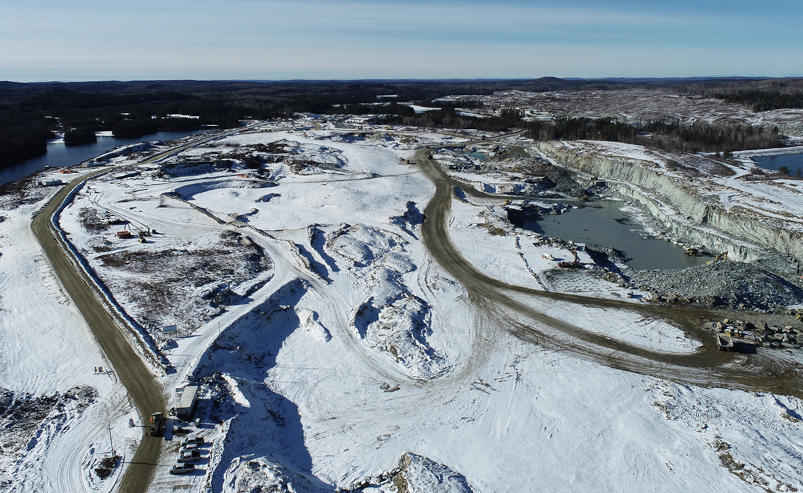If the mining industry of the future is going to be defined by new and disruptive technologies – such as autonomous haulage systems, IIoT connectivity and the usage of data in control systems – operations need to be prepared to plan and adjust around these advancements in order to maximize their impact. What kind of changes will companies need to make to build their digital programs at their operations, what kind of changes do they need to make in order to succeed?
The live panel on the opening day of CIM’s Mining 4.0 Digital Mine Symposium, taking place online from Nov. 1 to 3, addressed exactly that issue. Hosted by Sean Dessureault, vice-president of technology and innovation at The Mosaic Company, the panel guests included experts from completely different sections of the mining and technology overlap.
First up to the plate was Aaron Wylie, manager for automation at Teck Resources and part of Teck’s digital transformation program, RACE21. From Wylie’s point of view as an end user for the many new technologies that are being released, if the technology is not applied properly and integrated smartly into a digital program, it can potentially cause more issues than it solves.
“Bill Gates said it best, I think. The first rule is any [automation] technology, if applied to an efficient operation, will magnify that efficiency,” Wylie said. “The second is that if automation is applied to an inefficient operation, it will magnify the inefficiency. And the reality is we’re really blind on how inefficient we really are and what our real starting point is.”
According to Wylie, transformational technologies need to be planned ahead of time and implemented by a team represented by different levels of the organizations with a comprehensive change management strategy in place. This is especially true for aspects of the mining operation where a new technology would lead to drastic changes for how some employees do their jobs.
“It’s easy to apply an advanced analytics solution to grinding and flotation and nobody’s job changes,” Wylie said. “That’s a totally different proposition than introducing autonomous haul trucks or integrated operations in your business. And so, as you start to look at the complexity, and what’s required with those changes, that need [and] that demand should really drive the composition of that team.”
Related: The use of artificial intelligence in the mining industry is still finding its footing, but new technologies could see it impact every part of an operation
The next speaker, Laeeque Daneshmend, Noranda-Falconbridge chair and professor at the Robert M. Buchan Department of Mining at Queen’s University, spoke on the need for communication and teamwork between the technology developers and the mining companies in order to create solutions that work for the industry.
“What I’ve noticed is that there’s a definite, somewhat embedded hubris in the technology realm when it comes to the mining industry. People seem to think, ‘How hard can it be to make a hole in the ground?’ and they assume that all mining challenges can be remedied by technology,” Daneshmend said. “Conversely, the mining industry itself tends to be rather poor at understanding the potential of new technologies, and even worse at defining its own requirements. The lack of understanding can either lead to very conservative approaches and late adoption or, paradoxically, to unfettered techno-optimism and the misguided belief that technology will fix issues that actually require a fundamental rethink of internal business processes.”
Daneshmend gave examples of a “cutting-edge” technology that does not address the core needs of a mining client or does not integrate with a company’s business practices. Even if a technology addresses both those concerns, a mining company may not be leveraging the full capabilities of the technology.
“I think technology developers and vendors need to work closely with domain experts in mining who understand client needs to help define requirements, as well as evaluate and design appropriate solutions,” Daneshmend said. “Mining companies need to invest time and effort in formulating the technology requirements. The basic prerequisite for this is the thorough understanding and documentation of your existing business processes. You can’t digitally transform your operations if you don’t know or communicate how you currently do business.”
The last speaker was Andrew Scott, national cluster development manager at METS Ignited, executive chairman for Queensland Robotics. For him, one of the most important factors to successfully implementing a digital program at a mining operation is the presence of a diversified, multi-disciplinary team.
“What I think [one] of the key aspects to the digital experience really needs to considered is that [implementing a digital program] is a collaboration. You need to work with a network of components, providers and ultimately people,” Scott said. “Having a multidisciplinary team was really beneficial for being able to react… to the needs of the sites, but also having that deep operational knowledge and respect of the operations was really important.”
Reflecting on the lessons learned during his time working with Placer Dome and Barrick Gold, he said that having a strong team will allow for long-term planning and offer more room for testing and experimentation, which is necessary when new technologies are being developed at an increasing rate.
“You need to be able to have the ability to try things out, to see whether or not it’s going to fit within your organization, but also allow for and plan for the adapting of your organization to the new paradigms that are coming. And you’ve got no choice about them not coming, they are going to come and they are going to be disruptive,” Scott said.
As Mining 4.0 becomes a reality across the industry, it will become necessary for forward-facing mining companies to be flexible in their ideas and processes. While there will likely be growing pains, planning, communication across sectors and a strong team will help to integrate new technologies more effectively.
“Let any preconceived ideas go, just let them go,” Scott said. “Keep an open mind and embrace the new paradigms when they arrive. But have a plan for it, and more importantly, surround yourself with good people and ensure diversity, because diversity is a key enabler to enable you to be resilient.”



